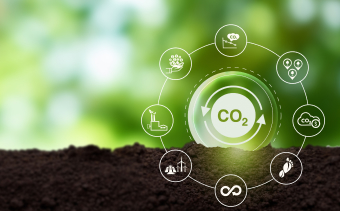The Life Cycle Assessment (LCA) methodology allows one to recognize, quantify and eventually evaluate the environmental impacts of a service, product, or activity throughout their entire life cycle (from extraction of raw materials, through transportation, production, use and end of life – disposal or recycling).
A full LCA provides results of different environmental indicators, for example:
Ozon layer depletion, water use, land use and acidification and global warming potential; A carbon footprint (CFP) focuses only on the global warming potential indicator, representing the GHG (Green House Gas) emissions. The LCA detects environmental hotspots, which allows the company to make data driven decisions about optimizing its product or service. Moreover, LCAs and CFPs can enable a comparison between similar products or services in terms of environmental impacts.
Reasons to conduct an LCA study:
- Identifying mitigatable environmental impacts
- Customer requirements and expectations, Interest of stakeholders
- Strategic research – scenario Examination
- Marketing and communication
- Environmental labels and claims (and prevention of green wash)
- Product development / Product improvement
- Innovation
- Meeting regulations and preparing for upcoming regulations
- Public policy making
Service content
- Preassessment- benchmark of similar products or services and common practices in the relevant sector
- Defining goal, scope (for example cradle to grave) and functional unit for the study
- Data collection
- Modelling and Impact Assessment – Creating a customized model in the LCA software
- Analysis of results
- Report including graphical representation of the results
- Interpretation and support in developing mitigation plans
Additional Options:
- Support in finding 3rd party verifiers for the study, and accompaniment in the verification process
- Compliance with specific certifications such as EPD, Carbon Trust etc.
- Comparative LCA study
- Different scenario analysis and determining activity regarding the reduction of the environmental impacts
Method:
- The service given will comply with relevant standards and guidelines (for example: ISO 14040 / 14044 / 14025 and others).
- Using a world leading LCA software – SimaPro, including leading databases such as Ecoinvent.











